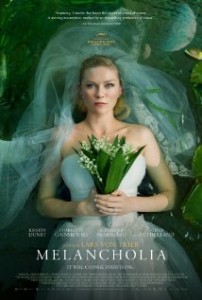Last night at South by Southwest, I attended the premiere of The Cabin in the Woods, the much-anticipated and long-delayed directorial debut of Drew Goddard (writer for Lost, Alias, and Buffy the Vampire Slayer), co-written and produced by Joss Whedon. I’d like to write about the movie at length today, but Whedon implored us not to reveal anything. “I want you to enjoy the film tonight,” he said, “…and then forget everything you saw.”
I’ll respect his wishes. The experience of the film depends on your not knowing anything about it—not because there is some big reveal, but because the film reveals itself to you steadily, act by act, and it’s tough to describe anything beyond what the title tells you (a group of students head to a cabin in the woods; frights ensue) without ruining something important.
Imagine, at a conceptual level, all six seasons Lost distilled into a feature film, and you’ll have some idea of why you don’t want to know much about Cabin before you see Cabin.
But I do want to make a comment that won’t spoil anything for anyone and that might set the table for a fruitful conversation once you’ve seen the film: The Cabin in the Woods is in keeping with the horror film tradition of depending on religion to deepen its sense of fright.
Many horror films draw on particular religions or particular faith practices, with Catholicism being the most represented due to the genre’s historical relationship to the gothic novel. Other horror films just draw on the fundamental human experiences of dread and the uncanny. Some use religion to make themselves more scary; some use religion to explain the source of our fears. The Cabin in the Woods does something more interesting—it uses both particular forms of religious faith and practice and an overall sense of dread to help ask questions about the meaning and purpose of the horror genre.
The philosopher Noel Carroll said that horror stories want to produce in us a combination of fear and disgust. Carroll calls this “art-horror” in order to distinguish it from the “natural horror” of, say, fear of a coming tornado. Art-horror describes our relationship to a story—we’re not just frightened by Frankenstein or Freddy Krueger; we’re repulsed by them, in part because they are deformed versions of ourselves. Horror can be very cheap, of course (which is part of Whedon and Goddard’s concern), but when it’s rich, it forces us to look at those deformities. Horror promises that it’s fun to be frightened, and then, once the fun is over, keeps us staring until we’re ready to ask what we’ve done to become this way.
The Cabin in the Woods, it seems to me after one viewing, is this rich kind of horror. Its use of religion is not the most pronounced aspect of the film, but it’s necessary to the film’s most basic question: Why would we go to The Cabin in the Woods in the first place?











